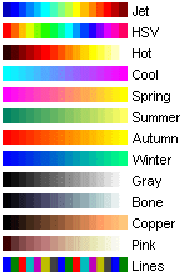
\Īccording to this equation, Red has contribute 21%, Green has contributed 72% which is greater in all three colors and Blue has contributed 7%. They have provided us a different set of weights for our channel averaging to get total luminance.
#Cv2 rgb to gray install
You can install it using the following command. First, we have to install the opencv-python package. Through many repetitions of carefully designed experiments, psychologists have figured out how different we perceive the luminance or red, green, and blue to be. To convert RGB image to Grayscale in Python, use the cv2.imread (args image) and cv2.cvtColor (image, cv2.COLORBGR2GRAY) methods. It also averages the values, but it forms a weighted average to account for human perception. This method is a more sophisticated version of the average method. The solution to this has been given by luminosity method. Step 3: Convert to grayscale using cv2.cvtcolor() function. Step 2: Read the original image using imread().

We are taking 33% of each, that means, each of the portion has same contribution in the image. In this program, we will change the color scheme of an image from rgb to grayscale. Right now what we are doing is 33% of Red, 33% of Green, 33% of Blue. Since the three different colors have three different wavelength and have their own contribution in the formation of image, so we have to take average according to their contribution, not done it averagely using average method. imshow ( grayscale_average_img, cmap = 'gray' ) plt. The amount of lightness is described using a value ranging from 0 (black) to 255 (white). Grayscale Grayscale is the simplest model since it defines colors using only one component that is lightness. mean ( fix_img, axis = 2 ) # (axis=0 would average across pixel rows and axis=1 would average across pixel columns.) Below there is the RGB coordinate system where we can see all the different colors that the model can describe: 2.2. That is it for Image types and Channels in Python cv2.Grayscale_average_img = np. So, if you want to split the image into other channels, then use cv2.split() method and assign different components to a new array and merge it to construct the channels. gray cv2.cvtColor(frame, cv2.COLORBGR2GRAY) 11 12 ret, gb cv2.threshold(gray,128,255,cv2.THRESHBINARY) 13 14 gb cv2.bitwisenot(gb) 15 16 contour,hier cv2.findContours(gb,cv2.RETRCCOMP,cv2.CHAINAPPROXSIMPLE) 17 18 for cnt in contour: 19 cv2.drawContours(gb, cnt,0,255,-1) 20 gray cv2. Let’s see if we can see the difference if we only use the channels to convert to gray scale. You can see that first is the original image and then below that there three different channels of that image. Convert the color channels directly to gray scale If you look at the conversions, they all favor green as the main value. In the final step, we need to display the image channels.

In the above code, we are filling the b, g, r values in the empty array to create three different versions of the image with respective channels. This array only accepts the pixel values between 0 to 255 because of uint8. The following paragraphs will examine the various alternative approaches. There are a number of different approaches that can be taken to solve the same problem. Then created an empty array of the same height and 3x width and this array only contains uint data type values. gray cv2.cvtColor (image, cv2.COLORBGR2GRAY) Rgb To Grayscale Python Opencv. In this code, we have split the image into b, g, r components. For each of these color-spaces there is a mapping function and they can be found at OpenCV cvtColor documentation. In general, none of them are absolute color-spaces and the last three (HSV, YCrCb and L a b) are ways of encoding RGB information.
#Cv2 rgb to gray how to
We will create three different images based on these channels by constructing the arrays. Cv2 Rgb To Gray How To Do That Cv2 Rgb To Gray How To Do That. We present some methods for converting the color image to grayscale: import cv2 import numpy as np import matplotlib.pyplot as plt matplotlib inline imgpath 'imggrayscalealgorithms.jpg' img cv2.imread(imgpath) print(img.shape) (1300, 1950, 3) Matplotlib EXPECTS RGB (Red Greed Blue) but. Python cv2.split() method splits the image into B, G, and R components. We need this step because now we will create an empty numpy array and use these dimensions to construct the arrays. To divide the shape into height, width, and channel, write the following code. Define ratios for Blue, Green, Red respectively These are nearly perfect values of ratios for conversion of RGB to Grayscale. Meaning height is 271, width is 529, and the channel is 3. ➜ pyt python3 app.pyįrom the output, you can see that the shape of the image is (271, 529, 3).

If you run the above file using python3 app.py command, you will get the following output. That means, when the cv2 generates an image, it will go to the left corner. Now, we are explicitly set the Window to cv2.moveWindow() with the same image name “Image” and 0, 0.
#Cv2 rgb to gray free
I will use free images available on the Internet. Now, read a new image using cv2.imread()method.


 0 kommentar(er)
0 kommentar(er)
